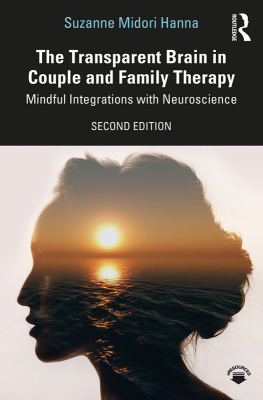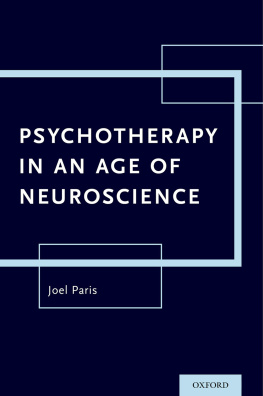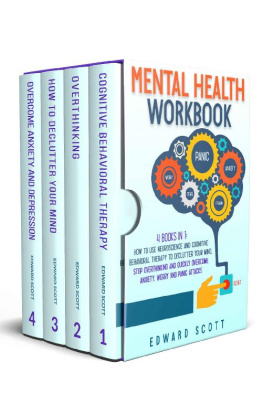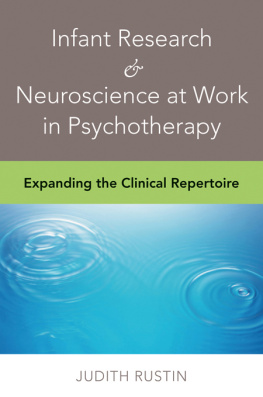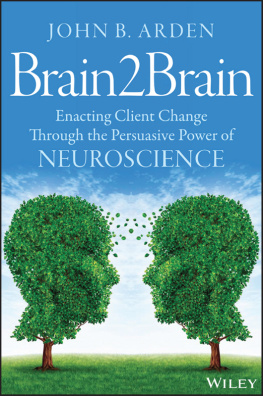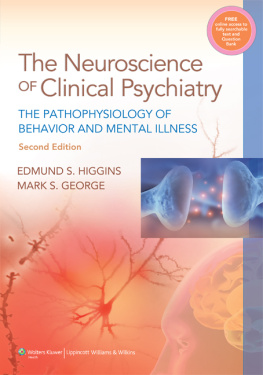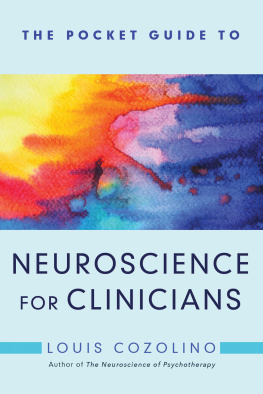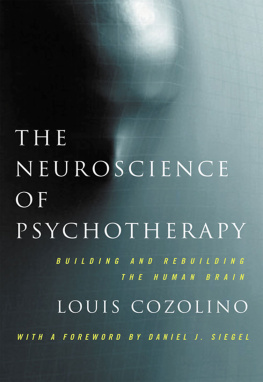Contents

Suzanne Midori Hanna's book is a must-read primer going beyond conventional couple and family therapy perspectives in understanding the brain's functioning. It is a delightful guide full of important information for those wanting to know more about the transparent brain. It focuses on an ecosystemic approach weaving multicultural and contextual perspectives. She covers critical issues from the neuroscience of racism and cultural wounding to the soul food for the therapeutic relationship. Read this book - and learn from one of the best.
Manijeh Daneshpour, Ph.D., distinguished
professor of couple and family therapy,
Alliant International University
The Transparent Brain in Couple and Family Therapy
Bringing together clinical expertise with the latest findings from social, affective, and cognitive neuroscience, this accessible guide outlines how basic concepts of neuroscience and family therapy can be highly relevant to all mental health treatment.
This expanded second edition includes content on a range of areas including effects of racism, poverty, violence, and childhood abuse on the brain; substance abuse; and advances in the treatment of depression, bipolar disorder, and anxiety. Grounded in five key tenets of neuroscience, the approaches highlighted in this book focus on the safety of secure bonds for children, adolescents, couples, and families, as well as how an understanding of neuroscience can be utilized by professionals during trauma therapy. The stages of brain development provide a map for practitioners that illustrates dozens of practical, daily interventions. Chapters discuss neuroscience in light of a range of contemporary dilemmas for client engagement, accompanied throughout by fresh case examples, worksheets, clinical guidelines, and step-by-step interventions.
Written in a jargon-free style, The Transparent Brain in Couple and Family Therapy, second edition is an essential resource for mental health professionals using neuroscientific principles to bring relief to clients from diverse backgrounds.
Suzanne Midori Hanna, Ph.D., is a marriage and family therapist with over 30 years experience as a clinician, educator, and program developer. She is the author of The Practice of Family Therapy: Key Elements Across Models (fifth edition). As a clinical fellow and approved supervisor of the American Association for Marriage and Family Therapy, she has been a faculty member, program director, and program developer for COAMFTE-accredited programs in Wisconsin, Kentucky, California, and Minnesota. She currently teaches for Capella University, USA.
Second edition published 2021
by Routledge
52 Vanderbilt Avenue, New York, NY 10017
and by Routledge
2 Park Square, Milton Park, Abingdon, Oxon, OX14 4RN
Routledge is an imprint of the Taylor & Francis Group, an informa business
2021 Suzanne Midori Hanna
The right of Suzanne Midori Hanna to be identified as author of this work has beenasserted by her in accordance with sections 77 and 78 of the Copyright, Designs andPatents Act 1988.
All rights reserved. No part of this book may be reprinted or reproduced or utilizedin any form or by any electronic, mechanical, or other means, now known or hereafterinvented, including photocopying and recording, or in any information storage or retrievalsystem, without permission in writing from the publishers.
Trademark notice: Product or corporate names may be trademarks or registered trademarks, and are usedonly for identification and explanation without intent to infringe.
First edition published by Routledge 2014
Library of Congress Cataloging-in-Publication Data
Names: Katz, Anne (Anne Jennifer), 1958- author.
Title: Woman cancer sex / Anne Katz.
Description: 2nd edition. | New York, NY: Routledge, 2021. | Includes bibliographical references and index.
Identifiers: LCCN 2020026714 (print) | LCCN 2020026715 (ebook) | ISBN 9780367544997(hardback) | ISBN 9780367548360 (paperback) | ISBN 9781003090809 (ebook)
Subjects: LCSH: CancerPatientsSexual behavior. | WomenDiseasesPsychologicalaspects. | WomenSexual behavior. | CancerPsychosomatic aspects. |Sex (Psychology)
Classification: LCC RC262 .K3595 2021 (print) | LCC RC262 (ebook) | DDC 362.196/994dc23
LC record available at https://lccn.loc.gov/2020026714
LC ebook record available at https://lccn.loc.gov/2020026715
ISBN: 978-0-367-28132-8 (hbk)
ISBN: 978-0-367-28133-5 (pbk)
ISBN: 978-0-429-29981-0 (ebk)
Typeset in Garamond
by KnowledgeWorks Global Ltd.
Visit the eResources: www.routledge.com/9780367281335
Routledge has been a remarkable gift for this edition. Clare Ashworth helped me give birth to this project and navigated the baby steps needed to get going. You were a great midwife! Thank you for your vision and coaching. Ellie Duncan was a lifeline of stability as we came across the finish line. Thank you so much for your guidance and clear thinking. You provided the needed water to help the ship sail through smooth seas. Your reassuring presence calmed my activated brain! Our production editor was a tremendous help during many detailed parts of the process and was amazing with the finishing touches. Im so proud of our design and presentation! Many thanks to all of you.
So many others have helped me with this edition. The research help from Tristan Morgan and Keith Louw was extremely valuable. The material you provided kept me on track and focused. Thank you for the sacrifices you made during that stage of our work. I deeply appreciate all the spoken and unspoken ways in which you provided support! Many colleagues provided inspiration and guidance along the way., Thanks to Linda Chapman for her groundbreaking work with children, to Terry Hargrave for his compassionate attention to what drives our hearts, and to the somatic practitioners who befriended me as I received training in Somatic Experiencing (SE) and organic intelligence. You helped me connect the dots between the wisdom and resilience of our bodies and the resolve and capacities of our minds. Finally, thanks to Susan, Claudia, Carrie, Kurt, Terry, Denise, Scot, Cathy, Thomas, and Yvette. I never got isolated when I had such great hearts beating in my universe. It means a lot that youre there for me. You helped me keep my eyes on the prize. Blessings to you all.
To my dad, the late Mervil Hanna, son of Junichi Hanaoka and Clara Wade, who kept me safe from the traumas and burdens that haunted his life so that my childs mind would not have to imagine. Instead, we went to Disneyland! But now that I know Dad, youre my hero. And, more than that, you did it your way. I love you.
It has now been 30 years since the decade of the brain first emerged in the 1990s. The first edition of this book came during the second decade and introduced family therapists and others to the transparent brain, a variety of breathtaking discoveries from neuroscientists. These allow us to peek inside the brain and see what is happening. Now, continued discoveries help us to see that the brain is more transparent than ever! I still get chills when I think about how a babys brain lights up at the sound of another human voice (Lloyd-Fox et al., 2012)! I am grateful for what this is teaching us about the mental health service we are called to perform. This is a transformative journey that is an amazing adventure of more discoveries and surprises. We still have much to learn.
Regardless of discipline, we are all in this together. In the first edition, there was discussion about disciplines at a crossroads. We have passed that intersection and made choices to walk together in integration. In this edition, we read about mental health giants like Marsha Linehan and how neuroscientists are studying her work. David Miklowitz is performing functional magnetic resonance imaging (fMRI) on bipolar patients before and after multifamily groups. Bruce Perry provides neurosequential treatment plans that achieve miraculous results. These are a few of my favorite things in this edition, but more integrations like these appear in every chapter. We perform a neuroscience dissection of the therapy of the late Michael White, who is still an icon in the family therapy world. Also, additional research and concepts have been added to our sections on restoration therapy and emotion focused couple therapy.

